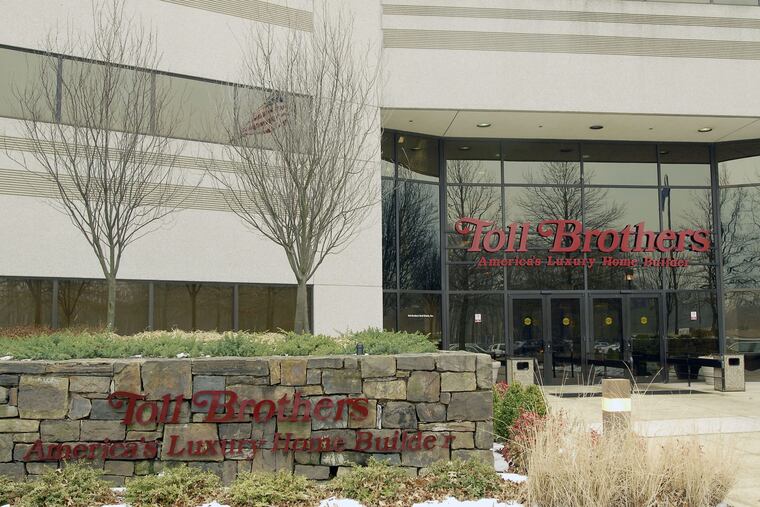Toll Bros. gets some love from Barron’s magazine
The recent issue says the company's stock looks cheap as concerns about higher mortgage interest rates and high labor and lumber costs may be overblown.

Horsham, Pa.-based Toll Bros.' shares look cheap as concerns about higher mortgage interest rates and high labor and lumber costs may be overblown, according to Barron's magazine.
"Toll has a high-quality land base and a good management team that has the ability to deploy capital through buybacks and other actions to improve returns," RBC's Michael Dahl, who had a $46 price target on the shares, told the magazine for its July 7 issue. The stock (symbol: TOL) dropped in late June to around $35 a share from $52.73 in January. The stock was up 2.22 percent on Monday to close at $37.83.
Unlike homebuilder rivals like D.R. Horton (DHI), Lennar (LEN), and PulteGroup (PHM), which cater mostly to entry-level buyers in the Sunbelt, Toll caters to the upper end, Barron's said.
The company builds mostly high-end homes with average price tags that can be double those of other large, publicly traded builders, and executives said those buyers are less susceptible to fluctuations in mortgage rates. Toll derives more than half its revenue from Western states.
"We appreciate the article," said Marty Connor, chief financial officer at Toll.
"We continue to generate strong revenue growth and solid earnings coupled with improving return on equity. Unfortunately, on occasion, investor sentiment for the industry and our niche may trend away from the actual positive results we are producing. We saw something similar a couple years ago when sentiment was negative on us due to our higher-end price point, but we continued to demonstrate strong results and the stock responded," he said.
Homebuilders nationally have also struggled with costs of timber for new houses, the price of which has risen to record highs in 2018 after the Trump administration's decision to place tariffs on Canadian lumber.